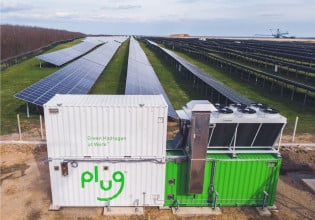Energy Department Announces $12 Million to Accelerate Record-Breaking Solar Cell Efficiency
As part of the Energy Department's SunShot Initiative, the Department announced $12 million to develop innovative, ultra-efficient solar devices that will close the gap with the theoretical efficiency limit, or the highest potential percentage of sunlight converted directly into electricity. Today, a sizable gap still exists between the efficiency of laboratory and commercial-scale solar photovoltaic (PV) cells and the predicted maximum efficiencies of different solar cell materials. Accelerating breakthroughs in solar cell conversion efficiency will help continue to lower the overall cost of solar power and drive the development of advanced, low-cost PV modules.
The new funding opportunity announced today builds on the SunShot Initiative's FPACEI projects awarded in September 2011 which are aimed at eliminating the gap between the efficiencies of best prototype cells achieved in the laboratory and the efficiencies of typical cells produced on manufacturing lines. In the current solicitation, FPACEII seeks proposals from collaborative teams of researchers from national laboratories, universities, and industry that can develop materials model systems and fabricate prototype devices that achieve efficiencies near the Shockley-Queisser limit. For more information related to this funding opportunity, visit the Funding Opportunity Exchange website.
In 1961, William Shockley and Hans Queisser published their seminal research detailing the limit of energy conversion efficiency for solar cells. Since then, various solar technologies have come closer to meeting this maximum level, about 30% for a single-junction solar cell. The initiative announced today—the Foundational Program to Advance Cell Efficiency II (FPACEII)—aims to accelerate record-breaking conversion efficiencies that will close the gap with this theoretical limit for a variety of PV cells including silicon-based technologies and thin-film materials such as cadmium telluride (CdTe) and cooper indium gallium diselenide (CIGS).
The SunShot Initiative is a collaborative national effort to make solar energy cost competitive with other forms of energy by the end of the decade. Inspired by President Kennedy's "Moon Shot" program that put the first man on the moon, the SunShot Initiative has created new momentum for the solar industry by highlighting the need for American competitiveness in the clean energy race.






